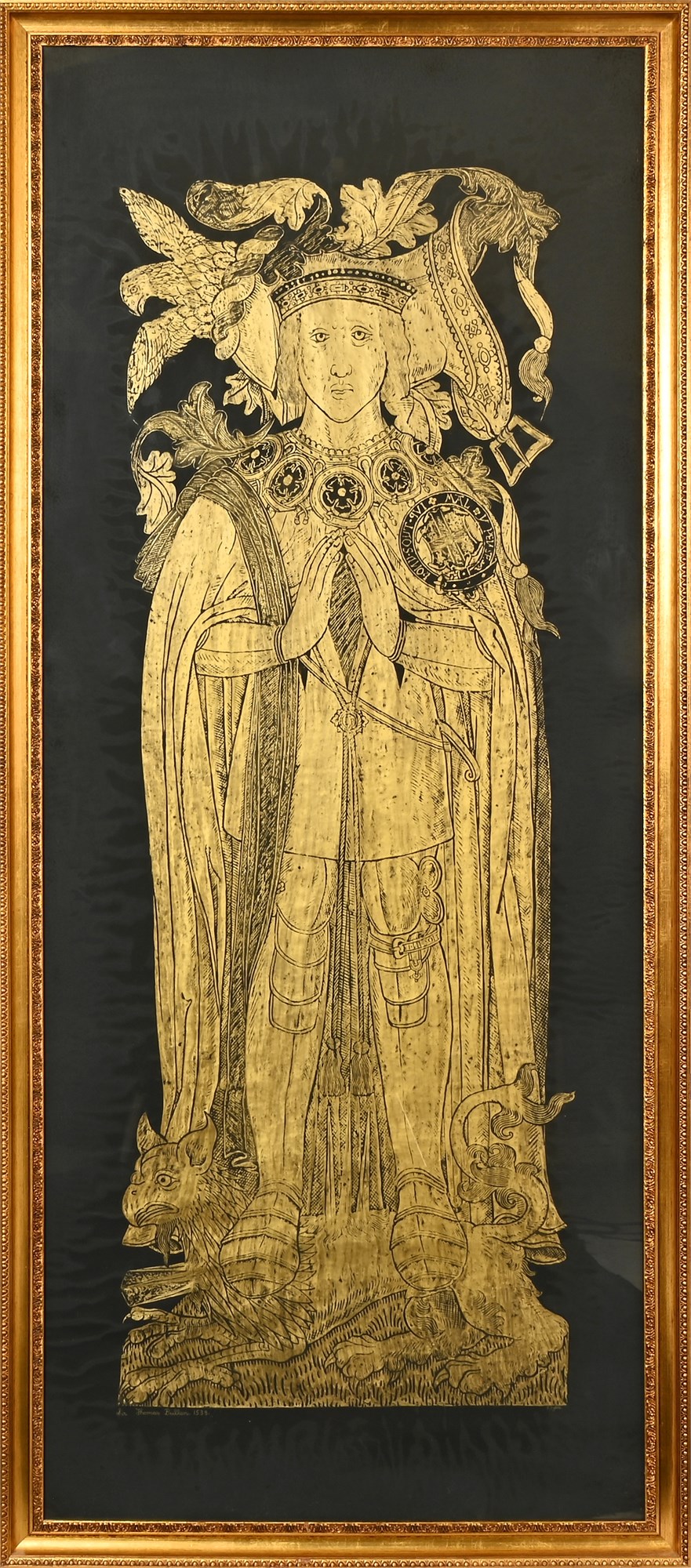68" Brass Rubbing of Sir Thomas Bullen View Watchlist >
- Winning Bid: $410.00
- 61 Bid(s) View Bid History
- High Bidder: contessapageant
Seller Accepts Credit Cards
Payment and pickup instructions will be available on your invoice (under "My Account") at the conclusion of this auction.
Lot # J185
System ID # 15187071
Start Date
End Date
1 Watching
68" Brass Rubbing of Sir Thomas Bullen
- Signed Lower Right: "S.Dyble"
- Documentation Attached To Rear
The brass rubbing represents a very important historical personage. Sir Thomas Bullen was the father of Anne Boleyn (The second and most famous of Henry VIII's wives) and consequently the grandfather of Queen Elizabeth I.
King Henry wanted to marry Anne, but the Pope wouldn't annul his marriage to Catherine (His First Wife), so, Henry appointed
himself head of the Church of England. In the Interim Anne bore the King a child, Elizabeth. Unfortunately, by now the King was
tired of Anne Boleyn and charged her with infidelity. Still, Anne's child, Elizabeth, became Elizabeth I, Queen of England. Thomas Bullen for fear of losing royal favor cast a dissenting vote which helped speed his daughter's death. During Anne's favor at court, Sir Thomas was able to amass a substantial fortune.
But, even before this time he was well known among the hierarchy of the day. He was a good friend of Erasmus who stayed with him at Hever Castle. He was inducted into the famed Order of the Garter which is the highest order in England. (While King Edward III was dancing with the countess of Salisbury, she lost her garter and many of the royal guests began to snicker. The King picked up the blue garter, saying in French, "Evil be to him who thinks Evil", and he promised to make everyone desire to wear the garter. He did in fact do just that when he formed the Order of Garter in 1349. The garter is worn below the left knee and is embroidered with the words of the King, " Honi Soit Que Pence".
This brass of Sir Thomas Bullen can be seen at St. Peter's Church in the grounds of Hever Castle Kent.
Since Anne lived at Hever Castle and Henry VIII came to call at Hever to visit her, visitors often asl about Anne's place
of burial. This was, of course, the Tower of London after her execution on May 19th 1536.
Condition:
Good, As Shown, Professionally Framed
Size:
Overall: 6.5' X 31"
Visible: 68" X 27"
